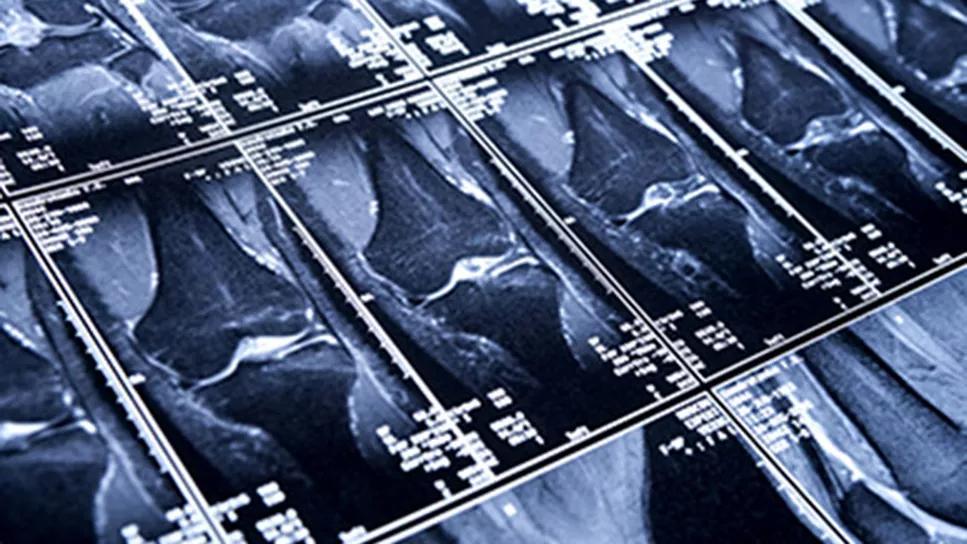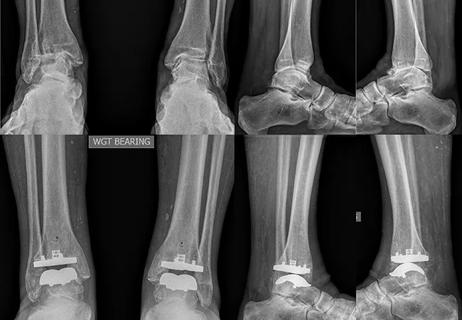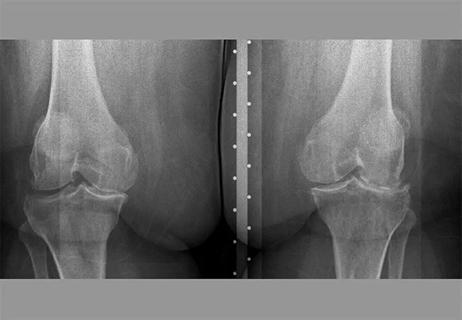Center will coordinate, interpret and archive imaging data for all multicenter trials conducted by the foundation’s Osteoarthritis Clinical Trial Network

The Arthritis Foundation has selected Cleveland Clinic as the future home for its Osteoarthritis Imaging Center (OIC), designed to become the largest repository in the U.S. for post-traumatic osteoarthritis imaging data.
Advertisement
Cleveland Clinic is a non-profit academic medical center. Advertising on our site helps support our mission. We do not endorse non-Cleveland Clinic products or services. Policy
The OIC will coordinate imaging for all multicenter trials conducted by the foundation’s Osteoarthritis Clinical Trial Network, a collaboration of 12 research institutions, including Cleveland Clinic. Images from these studies will be sent to the OIC for interpretation and analysis. Researchers and physicians can reference them in a central location for future studies.
The OIC at Cleveland Clinic, combined with Arthritis Foundation-funded repositories of clinical data, biomechanical biomarkers and biochemical biomarkers (to be developed at Mass General Brigham, the University of North Carolina at Chapel Hill, and Duke University, respectively), will help researchers across the U.S. make breakthroughs in predicting and treating post-traumatic osteoarthritis.
“Imaging markers that indicate which patients will develop arthritis after an injury or surgery may only be seen by artificial intelligence, not the human eye,” says sports medicine orthopaedic surgeon Kurt P. Spindler, MD, Director of Clinical Research and Outcomes at Cleveland Clinic Florida. “We haven’t been able to detect those details before, but now we will, thanks to the collaboration made possible by the Arthritis Foundation.”
The OIC will build on the expertise of Cleveland Clinic’s Musculoskeletal Research Center, founded in 2001. The center houses the Program of Advanced Musculoskeletal Imaging, where physicians, engineers and scientists work together to advance imaging technology, education and collaboration with other institutions.
Advertisement
“Cleveland Clinic has great expertise in clinical and advanced quantitative imaging as well as deep experience leading multicenter clinical trials on postsurgical conditions and osteoarthritis,” says Cleveland Clinic biomedical engineer Xiaojuan Li, PhD, Director of the Program of Advanced Musculoskeletal Imaging. “That coupled with our ability to collaborate across organizations made us a strong candidate to build the Arthritis Foundation’s OIC.”
In phase one of the $2.5 million Arthritis Foundation grant, researchers at Cleveland Clinic will build the infrastructure for gathering and archiving images from trial sites across the nation.
“Gathering comprehensive imaging data is often resource limited. It is time consuming and costly to obtain large numbers of patient images,” says Dr. Li, the grant’s co-principal investigator. “By establishing a large, central hub, we can provide the support needed to collect ‘big data’ in a standardized manner that researchers need to solve problems and develop new treatments.”
The OIC will provide core lab services for institutions conducting clinical trials that otherwise might need to outsource the services at a higher expense. These services will include the design, harmonization and dissemination of study imaging protocols; site qualification for imaging capability and quality control; and image transfer, reading, processing and interpretation. In particular, based on the OIC team’s extensive experience with advanced quantitative imaging for osteoarthritis (through several multicenter cohort studies sponsored by the National Institutes of Health), the OIC will work on adding quantitative imaging to large-scale clinical trials.
Advertisement
“Through standardizing the images and data that come from clinical trials, it will be easier to translate some of the research findings into patient care,” says Cleveland Clinic radiologist Carl S. Winalski, MD, Clinical Director of the Program of Advanced Musculoskeletal Imaging and the grant’s co-principal investigator. “Instead of weeding through hundreds of images to find a comparable case, the OIC will provide a searchable library and connect physicians to the information they need.”
In addition to radiographs, which are standard in osteoarthritis care, the OIC will collect and analyze data from MRI, CT and other advanced imaging modalities.
“Having access to more highly sensitive MR and CT imaging could provide the foundation for additional biomarkers to catch osteoarthritis early and guide treatment,” says Dr. Li, whose own research focuses on translating quantitative MRI into clinical care of musculoskeletal disorders.
The Post-Injury Knee Arthritis Severity Outcomes (PIKASO) clinical trial is among the first research projects to be served by the OIC. The randomized phase 2 study will test if metformin, a drug commonly used to treat patients with type 2 diabetes and found to have anti-inflammatory properties, can help prevent or delay the development of post-traumatic osteoarthritis in patients after ACL reconstruction.
The OIC will collect and analyze MRI data from patients at Cleveland Clinic and other centers in the Osteoarthritis Clinical Trial Network:
Advertisement
Up to 50% of young patients with ACL reconstruction will get post-traumatic osteoarthritis, says Dr. Li. They have a high risk of needing total knee replacement in their 40s or 50s.
“PIKASO is the first large-scale trial of pharmacological interventions to prevent post-traumatic osteoarthritis. It may also provide new insights into general osteoarthritis,” says Dr. Li. “It is just one of many more studies we hope to do at the OIC, sharing expertise with other leading research centers and, together, getting one step closer to a disease-modifying treatment for osteoarthritis.”
Advertisement
Advertisement

A tailored approach combining injections, therapy and preventive care is improving outcomes for patients with elbow OA

Cleveland Clinic radiation oncologists aim to bring the noninvasive approach back to the U.S., where use has declined

Arthrodesis is not the only surgical option

How it actually compares to posterior and lateral approaches

When procedure is performed by high-volume surgeons, outcomes are comparable to total knee replacement

Patient age and baseline platelet count are considerable influences

Offers adequate exposure of normal and abnormal anatomy

New program bridges orthopaedics and endocrinology